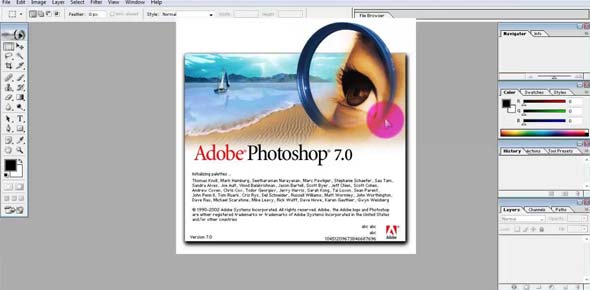To ____ an erasure, you can press CTRL+Z.
You can click the Undo command or you can press ____ to undo the last...
WE can duplicate a layer by right-clicking a layer in the Layers...
Selections can be the entire photo or as small a portion as ____.
When you edit a photo the changes become permanent when you ____.
A special kind of mask is a ____ mask that masks the layers above it.
When you scale a selection you resize it by ____.
The selected layer is referred to as the ____ layer in the Layers...
The ____ tool is similar to the Eraser tool except it erases all...
The ____ lets you select a consistently colored area without having to...
The Magic Eraser options bar allows you to enter a(n) ____ value to...
Each tool on the Tools palette displays a tool ____.
If the Sample All Layers box is NOT checked, the Magic wand tool...
The Mode box arrow displays a list of ____ modes, which are the ways...
Layer _____ help you manage and organize layers in a logical manner.
In ____, resizing means adding or subtracting the number of pixels.
A pixel is an individual dot of ____ that is the basic unit used to...
The ____ transformation command results in the selection being...
With the Move Tool, if you press and hold the ALT key before dragging,...
Legal rights to use an image include all of the following EXCEPT...
A minimized palette displays its tab, a menu button, a ____ button and...
Pictures in electronic form are called ____.
You perform most tool tasks and edit the photo in the ____.
A printing press can reproduce about _____ levels of gray per ink.
____ is the technique photographers, designers and artists use to...
When working with composite objects, to maintain the integrity of each...
To create a layer, you can do any of the following EXCEPT _____.
The ____ command allows you to change the view and size of the...
The ____ transformation command results in the selection being...
1.To constrain a line angle to a multiple of 45 degrees, hold down the...
The following is NOT true of rulers: ____.
A ____ determines the number of colors and combinations or colors used...
Photoshop has four marquee tools that do NOT include ____.
A ____ is a short on-screen note associated with the object to which...
The term ____ refers to the ability of objects to automatically align...
A(n) _____ is a section within a Photoshop document that you can...
Graphic designers use layer and clones along with other tools in...
The Eraser tool options bar displays a(n) _____ box in which you can...
Three dots, called ____, follow some menu commands.
The following steps are NOT recorded in the history palette: ____.
Clicking a(n) ____ button in the Gradient Editor dialog box allows you...
When you choose a transformation, Photoshop displays a ____ or border...
The grid can be displayed ____.
The _____ check box creates a smooth edge that can apply to both...
The menu bar is a special toolbar that displays the Photoshop ____.
Metadata is divided into three categories that do NOT include ____.
The ____ tool samples the hot spot and deletes that color wherever it...
____ the border adjusts the radius of the pixels at the inner...
The ____ palette allows you to view tonal and color information about...
To display or turn off guides, press ____.
A ____ allows you to specify exact pixel values for the marquee's...
____ are resolution-dependent bitmap images that are created with the...
A layer mask is a ____ image, which means each pixel in the image is...
Color modes use a ____ to determine how to display and print colors.
A ____ style sets the selection marquee proportions by dragging.
To deselect a previous selection, ____.
The ____ transformation command results in the selection being slanted...
Each time you change an image, the new ____ of that image is added to...
For Web pages destined for print on 8.5 x 11-inch paper, you should...
A ____ does not immediately display on a menu.
The magnetic lasso displays ____ on the edge of an object.
A ____ box allows you to specify the rate at which the lasso sets...
On most layers, the Eraser tool simply erases the pixels or changes...
Magnification refers to the percentage of reduction or enlargement...
















